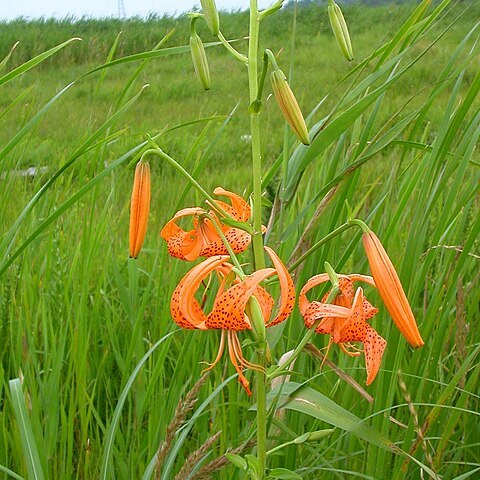Bulb white, globose, (2--)4 cm in diam. Stem 0.5--2 m, with purple spots, papillose, white woolly when young. Leaves scattered, sessile or shortly petiolate, narrowly lanceolate to oblong-lanceolate, 3--10(--14) × 0.6--1.2(--1.6) cm, white woolly when young, glabrous when mature, 3--7-veined, axil without bulblets, margin papillose, apex acute-acuminate. Flowers 2--8(--10) in a raceme, rarely solitary, nodding. Tepals revolute, red, with purple spots, lanceolate, 4.5--6.5(--8.5) × 0.9--1.5 cm; nectaries papillose and with fimbriate projections on both surfaces, densely so proximally on adaxial surface. Stamens diverging; filaments 3.5--4 cm, glabrous; anthers vermilion, ca. 1.1 cm. Ovary cylindric, 1.2--1.3 cm × 2--3 mm. Style ca. 3 cm. Capsule ellipsoid, ca. 3 cm. Fl. Jul--Aug. 2 n = 24*.
More
A bulb plant. The bulb is round and white and 4 cm across. The stem can be 2 m tall. The leaves are scattered and without stalks. They are sword shaped and 3-10 cm long by 1 cm wide. They are white and woolly when young. The flowers occur as 2-8 in a group. They are red with purple spots.
Humus-rich soils in river valleys and amongst grass on hills. Sandy places along valleys, mountain grasslands, limestone or serpentine areas; at elevations from near sea level to 1,300 metres.
More
It is a temperate plant. In China it grows in mountain grasslands from sea level to 1,300 m above sea level. It is often on limestone.

